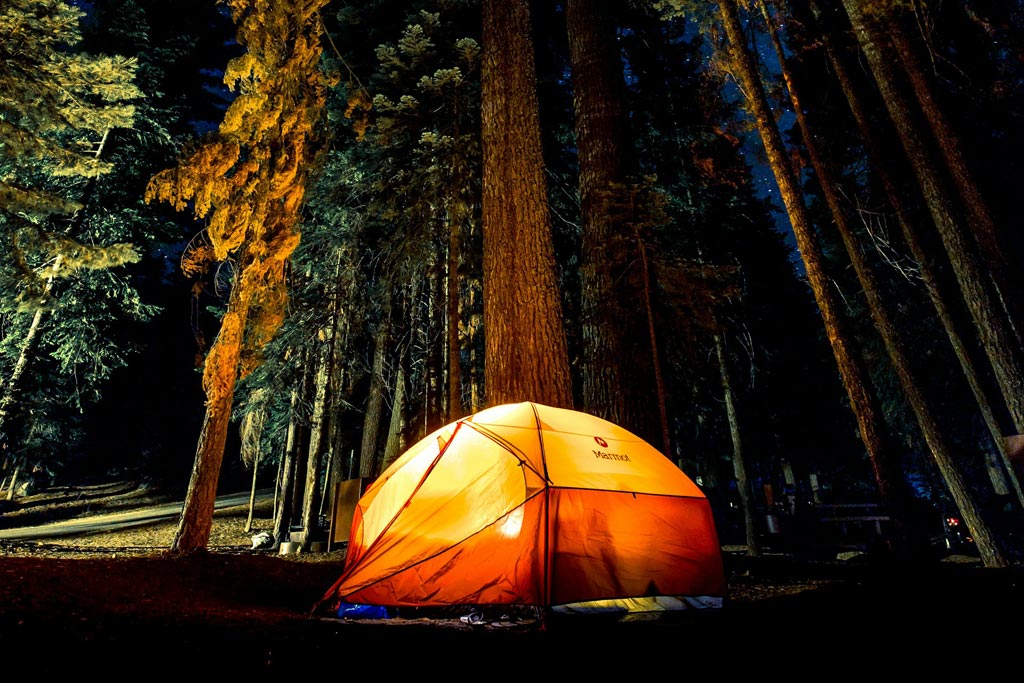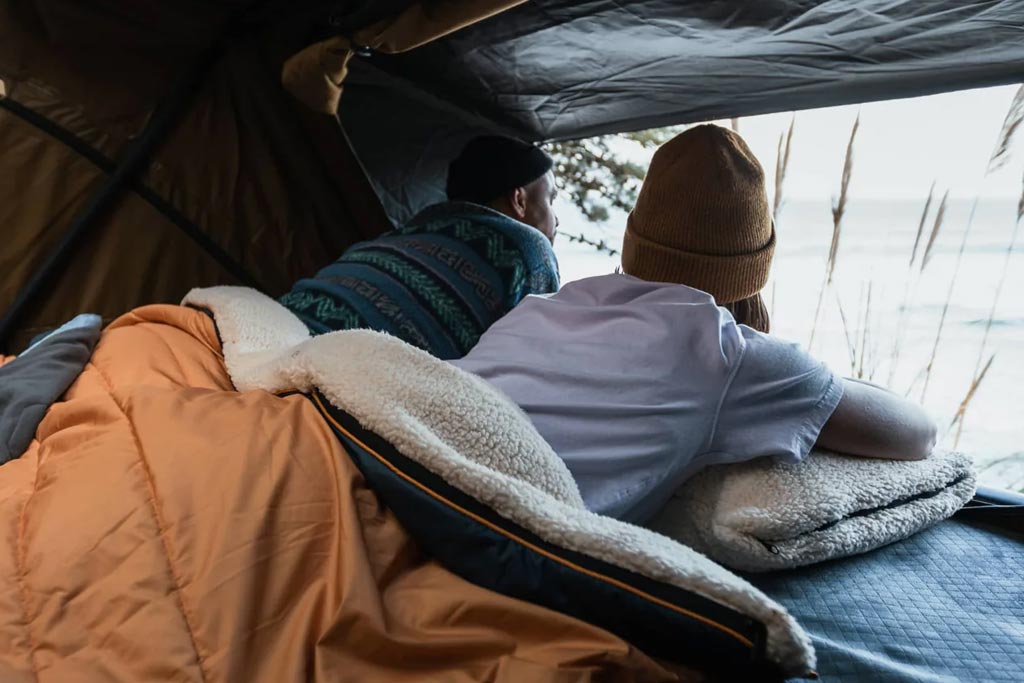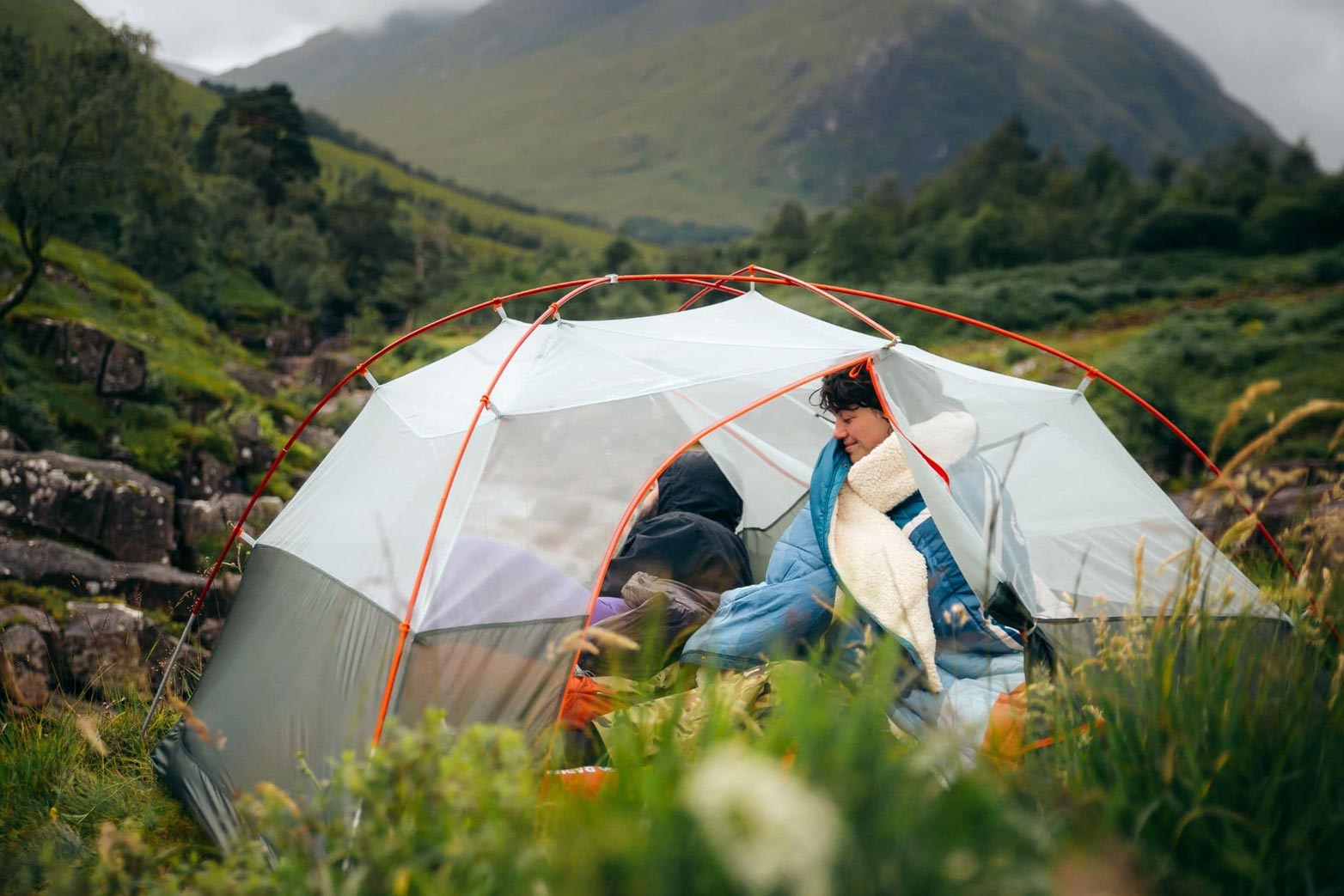If you’re an eco-conscious adventurer who loves the great outdoors but wants to leave the smallest footprint behind, this guide to sustainable camping gear is for you! We’ve got the lowdown on how to pack smarter, camp greener, and still have all the cozy comforts of home (well, almost).
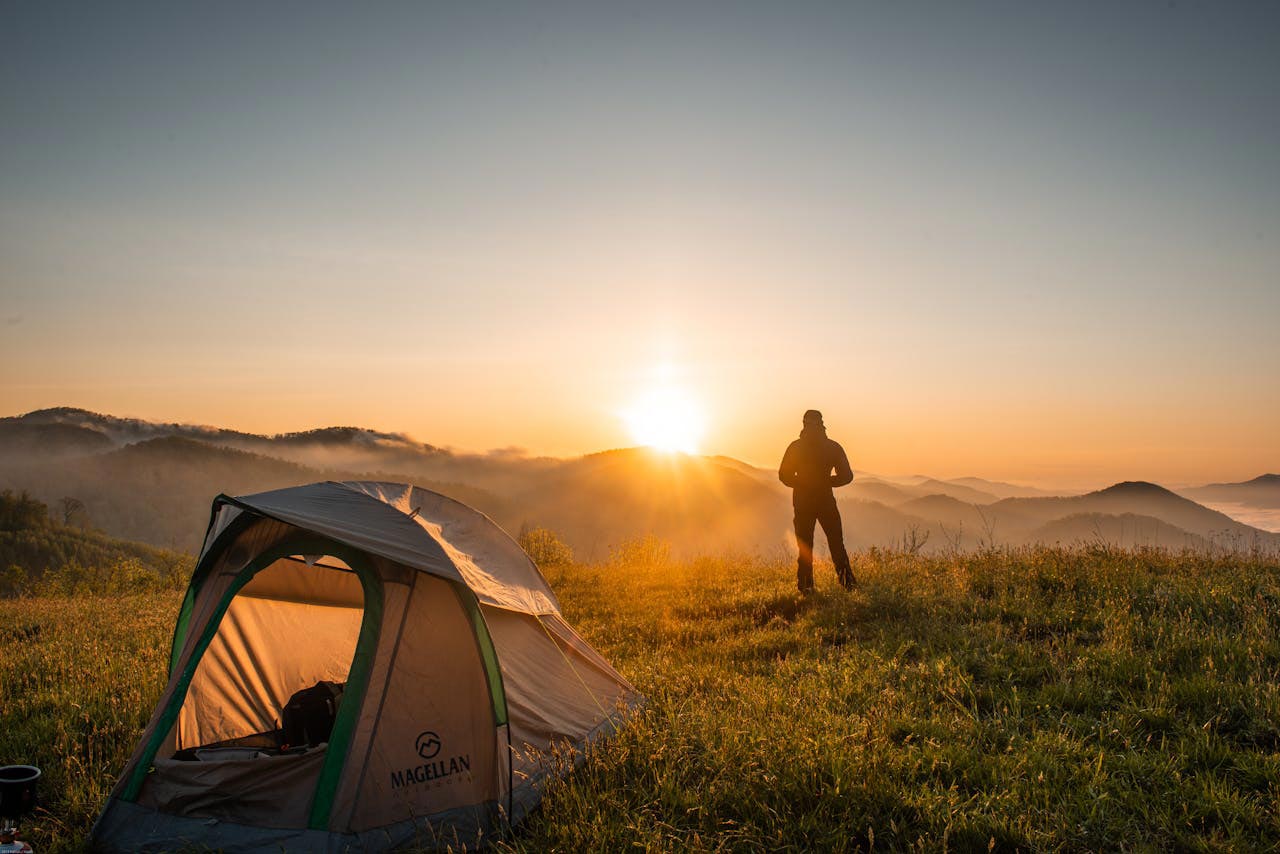
Introduction: Leave Nothing But Footprints, Take Nothing But Epic Memories
Hey there, fellow adventurer! 🌿 Ready to hit the trails, sleep under the stars, and wake up to the sound of birds chirping? But—plot twist—you’re also keen on keeping your impact on the environment as small as the squirrels you’ll spot along the way? Great! We’re about to dive into the world of sustainable camping gear, so you can enjoy nature and help preserve it at the same time.
Camping sustainably doesn’t mean sacrificing comfort or style. In fact, some of the best sustainable outdoor gear out there is designed with Mother Earth in mind—whether it’s made from recycled materials, is built to last, or can be used in a bunch of creative ways. So grab your reusable water bottle, strap on your ethically made boots, and let’s explore some eco-friendly gear that’ll have you adventuring like a green pro.
Why Sustainable Camping Gear Matters
Okay, quick reality check: Did you know the outdoor industry produces tons of gear every year, much of it made from materials that take hundreds of years to break down? Yikes. And while that synthetic sleeping bag may have kept you warm last year, it’s time to think about how we can camp more responsibly.
Sustainable camping gear is the future of camping—here’s why it rocks:
- Durability: High-quality eco-friendly gear is made to last, which means less waste (and less spending in the long run).
- Eco-Friendly Materials: Many brands now use recycled or upcycled materials, reducing their carbon footprint.
- Versatility: Minimalism is a huge part of green camping, and sustainable gear often serves multiple purposes.
Ready to switch out your old gear for something kinder to the planet? Let’s dive into the sustainable camping gear must-haves.

1. Sleeping Bags & Blankets: Cozy Without the Carbon Guilt
If you’re like most campers, warmth is key to a good night’s sleep in the wild. But did you know many traditional sleeping bags are made from synthetic materials that aren’t exactly eco-friendly? Luckily, there are greener alternatives—like VOITED’s 4-in-1 Camping Blanket.
Why you’ll love it:
- It’s made from Recycled Ripstop REPREVE® fabric, so you’re staying cozy and helping recycle plastics at the same time.
- It’s not just a blanket—it’s also a sleeping bag, a pillow, and a poncho. Four uses, one item? That’s minimalist magic.
- The best part? It’s ultra-durable and designed to last for many adventures to come.
With a product like this, you’re cutting down on waste and on the number of items you need to pack. Win-win, right?
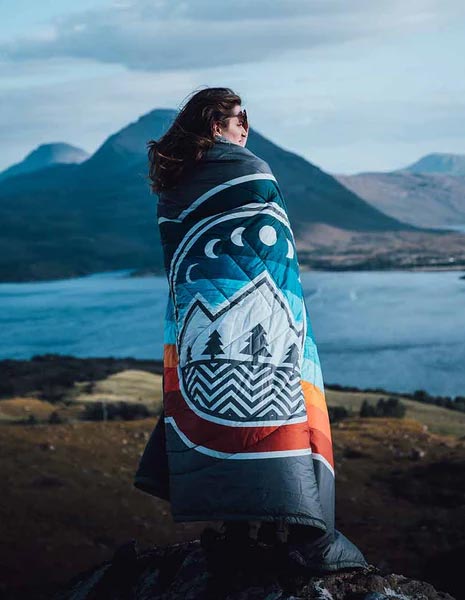
VOITED Eco-Friendly Camp Vibes Blanket
4-in-1 insulated camping blanket made with water-resistant recycled Ripstop.
VOITED Blue Mountain Blanket
Multi-functioning camping blanket with super warm CloudTouch fleece on one side and water-resistant Ripstop on the other.

2. Tents: Shelter From the Storm (And the Waste)
A good tent is your home away from home, but it doesn’t need to cost the Earth. Many outdoor brands now offer tents made from recycled or low-impact materials. Look for tents with certifications like the bluesign® standard, which guarantees that the production process was environmentally friendly.
When choosing a tent, consider:
- Materials: Opt for recycled fabrics or eco-friendly alternatives.
- Durability: A high-quality tent will last for years, cutting down on unnecessary waste. A core principle of sustainable camping gear.
- Packability: Choose a tent that’s lightweight and packs down small, so you don’t need to bring extra gear.
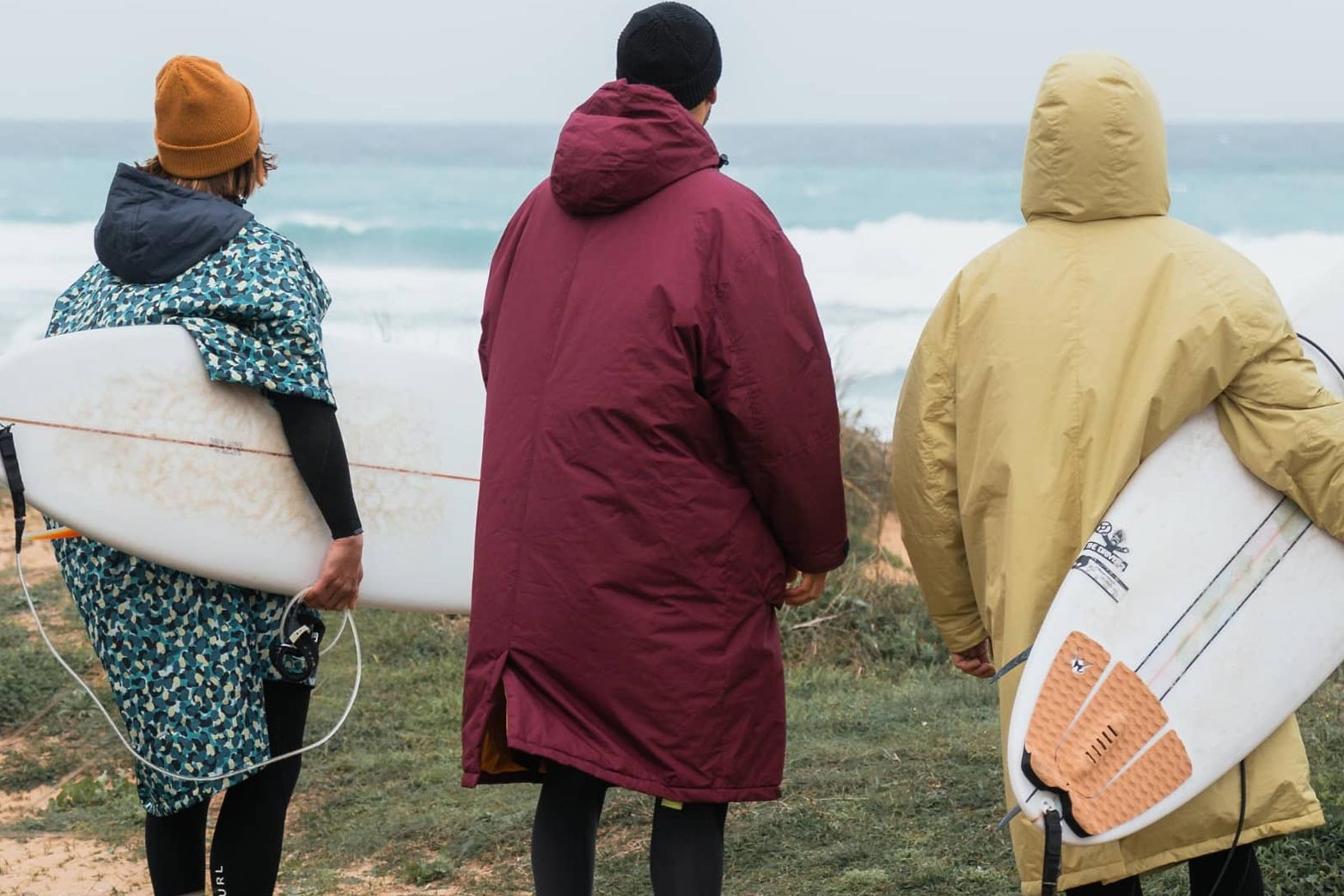
3. Clothing: Adventure-Ready and Eco-Conscious
Let’s talk outdoor fashion (because yes, even camping gear can be stylish). One word: changewear. VOITED’s Sustainable Changewear line is an absolute game changer. Whether you’re hitting the beach, gearing up for a hike, or waking up at dawn for a wild swim, you’ll want gear that’s as functional as it is comfortable—and changewear ticks all the boxes.
Why you’ll love it:
- Made from sustainable materials, VOITED changewear is lightweight, packable and designed for versatility—perfect for layering.
- It keeps you warm when you need it but is breathable enough to keep you comfortable when you’re active.
- Bonus: It transitions from day to night, so you don’t need a suitcase full of clothes. Minimalist packing for the win!
4. Cooking Gear: Fueling Your Adventure, the Green Way
You’ve got to eat, right? And there’s something magical about cooking up a meal in the great outdoors. But let’s ditch the single-use plastic utensils and non-recyclable packaging.
Here’s how to keep your camp kitchen sustainable:
- Reusable Cookware: Opt for stainless steel or recycled aluminum cookware that will last for years.
- Reusable Utensils: Swap plastic for bamboo or stainless steel cutlery.
- Eco-Friendly Stoves: Choose stoves that use renewable energy like solar power or biofuel.
Pair all this with lightweight, biodegradable cleaning supplies, and you’re all set for a planet-friendly feast!
5. Backpacks: Carry Your Gear, Not Your Guilt
No camping trip is complete without a good backpack. And just like your other gear, your pack can be eco-friendly, too. Brands like Patagonia and Osprey are leading the way in creating backpacks from recycled materials. Look for packs with these features:
- Recycled Fabrics: Many brands now use recycled nylon or polyester to create durable, eco-friendly packs.
- Longevity: A good backpack should last for years, reducing the need for replacements.
- Repairable Designs: Some companies offer repair programs to extend the life of your backpack, meaning you won’t need to toss it when it gets a tear.
6. Water Bottles & Hydration: Ditch the Plastic, Drink Smart
One of the easiest ways to be a more sustainable camper? Say goodbye to single-use plastic bottles. Instead, invest in a high-quality, reusable water bottle or hydration system. Stainless steel or glass bottles are great options—they’re durable, easy to clean, and better for the environment.
For those longer hikes, consider a hydration pack that holds a few liters of water, so you don’t need to keep buying bottled water along the way.
Final Thoughts: Green Camping Is the Way Forward
And there you have it! With just a few simple swaps, you can camp in style, comfort, and with a clear conscience. Sustainable camping gear not only helps protect the environment but also makes your adventures more mindful and connected to nature.
So next time you’re planning a trip, remember: It’s not just about where you go, but how you get there—and the gear you take with you. Happy (green) trails, friend! 🌲
